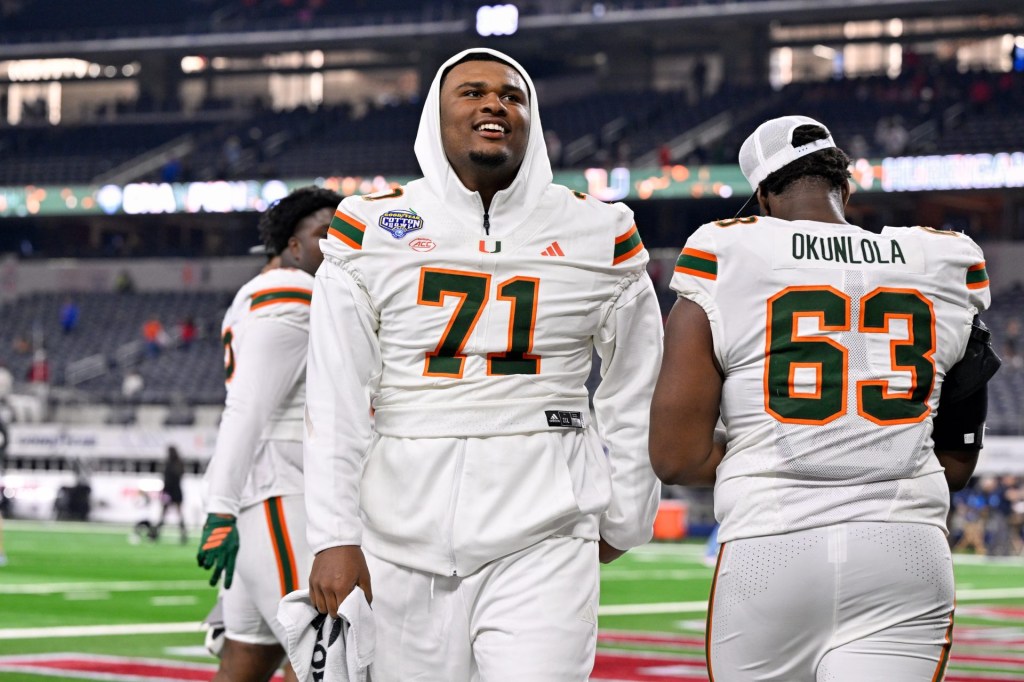The Internal Revenue Service could be coming for NIL (name, image, and likeness) collectives in 2025.
The agency listed college athletics’ collectives as one of its “compliance enforcement priorities” for the 2025 fiscal year. The Tax Exempt & Government Entities Division of the IRS published its report Oct. 29 looking ahead to the 2025 fiscal year.
The division said it wants to help groups “understand and comply with applicable tax laws and reporting obligations,” and identified collectives, nonprofit hospitals, and clean energy credits as three of the “highly complex or emerging issues” that will require more attention from the IRS.
Nonprofit status has been the shaky foundation of much of the collective ecosystem. Many groups sought and earned nonprofit status as a way to encourage wealthy boosters to donate to their cause in addition to the university or athletic department. Many collectives gained nonprofit status from the IRS by having the athletes they pay promote charitable causes.
But collectives have essentially become a recruiting tool, and the IRS knows this. In a 2023 memo, the agency’s deputy associate chief counsel, Lynne Camillo, said collectives have a primary purpose to pay college athletes, which outweighs the secondary purpose of any tax-exempt charitable work. The memo itself was issued as guidance rather than setting a legal precedent, but it has foreshadowed the IRS’s position on nonprofit collectives—one that was bolstered by recent denials of tax-exempt status to three collectives.
Mark Luscombe, principal tax analyst for Wolters Kluwer Tax & Accounting, tells Front Office Sports it’s “pretty clear” the IRS has changed its position on the subject. “I can’t imagine any more [collectives] being granted tax-exempt status, and I think they will be attacking or revoking any tax-exempt statuses that were granted,” Luscombe says.
The NCAA did not comment on this story, and the IRS received but did not immediately respond to questions.
Not all collectives are set up as nonprofits; the Grove Collective (Mississippi), Champion of Westwood (UCLA), and Dinkytown Athletes (Minnesota) are three examples. “Early legal investigation by the founders of Champion of Westwood indicated that the purpose for which the NIL law authorizes operation of Champion of Westwood – to compensate student-athletes for their publicity rights – was not likely to qualify as a charitable purpose,” reads the UCLA group’s website, using similar language as the other two collectives. Another indicator that the nonprofit model’s days could be numbered: Blueprint Sports, which operates dozens of for-profit collectives, is shuttering its nonprofit arm following letters from the federal government and attorneys general in several states, Sportico reported Monday.
But for the collectives that are 501(c)(3)s, removing tax incentives for boosters would likely drive down donations and could lead to an overall shift in the NIL market, which is currently dominated by collectives rather than brand deals.
Overturning the tax-exempt status of all nonprofit collectives could also contribute to a rerouting of the stream of money from donors to athletes. All this is happening while the college athletics world awaits the verdict of the House settlement in April, and schools are scrambling to figure out how they’d pay up to $22 million annually to athletes as soon as the next school year.
But it’s unlikely that an IRS decision would scrap the collective system entirely. While collectives function to pay the salaries of football and basketball teams, they also facilitate NIL deals and fan events for athletes in other sports. Experts predict that even with the House settlement potentially reworking college athlete payments in 2025, NIL collectives would still find a place in the market, albeit significantly reduced.
The other change in 2025 that could impact an IRS decision on NIL is the fact that the Republican Party has regained control of the presidency and Congress. The IRS was hamstrung by understaffing and outdated systems for a decade before Biden gave it an $80 billion boost in 2022, which Republicans have since reduced to $60 billion. President-elect Donald Trump has already said he plans to pull back any remaining unused funds.
“I think the only question would be whether some of the areas in which the IRS would like to be focusing enforcement activities, whether they will have all the resources they need to do so,” Luscombe says. “I think currently they do, but that might not be the case for long.”

















